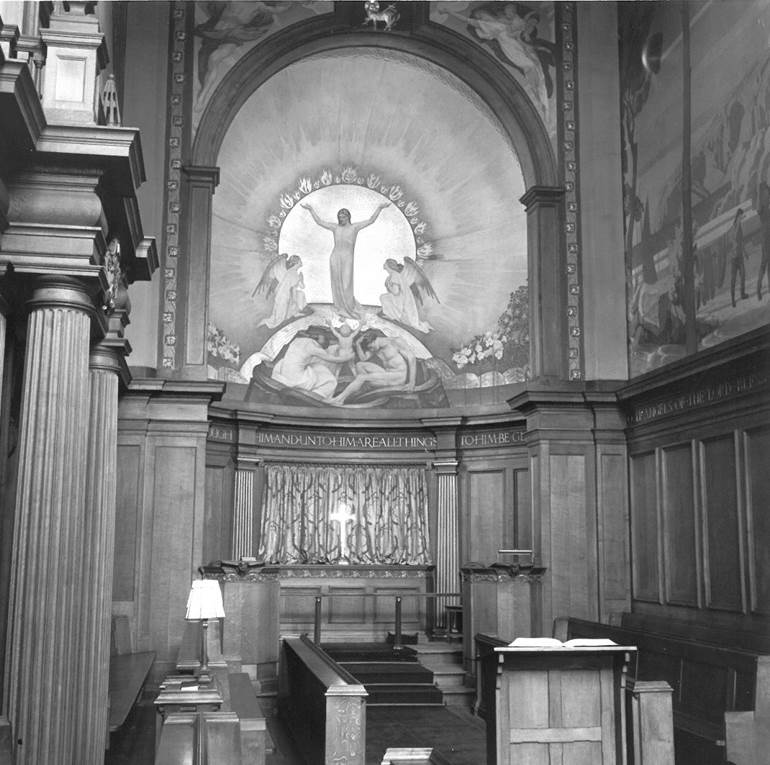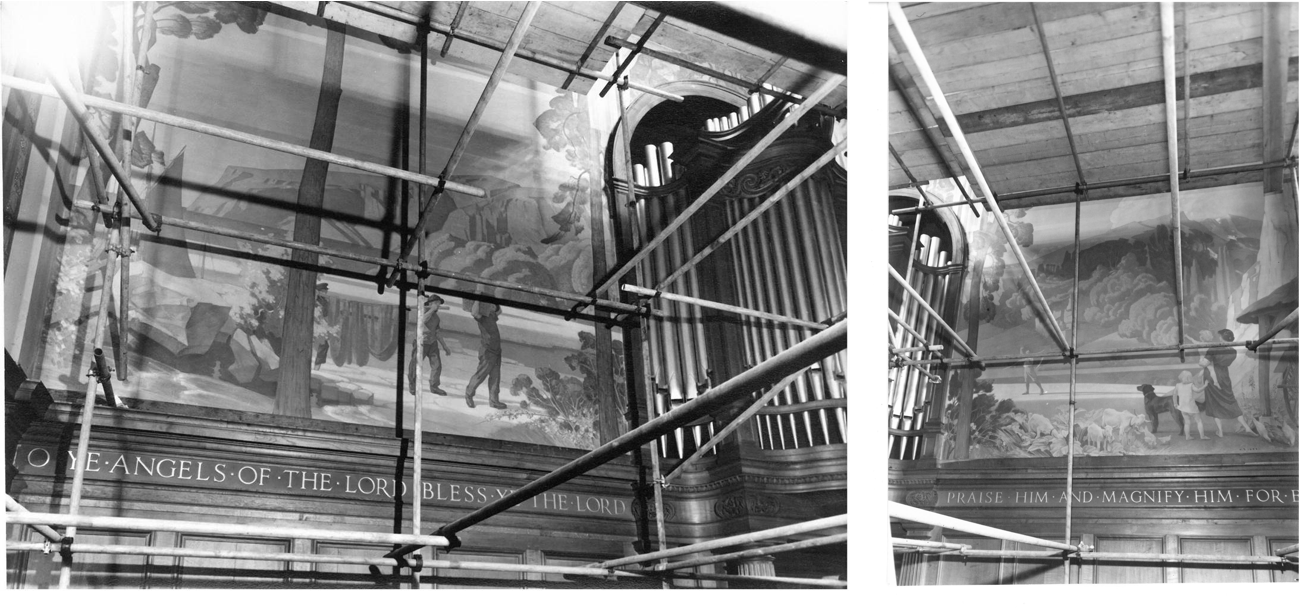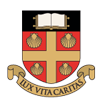Until the 1970s the walls of the Chapel were decorated with paintings. The text of a leaflet is reproduced below.
William Lamplough Memorial Chapel
Notes on the wall paintings
Complied by J.H.R. and H.M.H. after consultation with Mr Harold Speed, the artist
The Theme and its treatment
The Chapel of Wesley House, Cambridge, is decorated, not by a series of panel pictures, each one of which is complete in itself, but by a unity of painting, which covers the whole of the walls and ceiling, and seeks to fix the mind and heart of the worshipper on God, transcendent and immanent.
Wall painting differs from picture painting in that it is a part of the architectural scheme and must conform to this, as well as express its own message. The composition has to be so arranged as to support the corners of the building, prominent features, such as the organ loft and the corresponding arch on the opposite wall, must be taken into the design; a certain flatness of treatment has to be observed, so as not to conceal the fact that walls are walls intended for support. The form, tone and colour are simplified so as to combine with the clear cut lines of architecture.
The Apse

The Apse is the focus of the whole conception. There is no attempt to represent Deity. The thought, however, of God is suggested by the barest symbol – a circle – the line that has no end, and is everywhere the same. It is filled in with gold, the most mystic of colours, and in the full light of the window opposite, it is seen in its glittering splendour.
Standing before this symbol is the figure of Jesus Christ – God made manifest in the flesh. He is not depicted as crucified and dead, but in the fullness of His risen life, inviting mankind to come unto Him – “I am the Way, the Truth and the Life.” He is the ascended, glorified Christ, and Angels and Archangels, and all the company of Heaven, laud and magnify His glorious name.
He is still with us, immanent by His Spirit. The Holy Spirit is symbolised by a golden stream, flowing from the sea of the infinite and eternal Godhead. That stream encircles a group symbolising humanity, with the serpent (the lower nature) coiled below. Man and woman are bowed down with thought and care, the child-heart alone has the intuition of Him. “Except ye be converted, and become as little children, ye shall not enter into the Kingdom of Heaven.” Beside the stream on the right hand and left, grow lilies and roses, typifying love and beauty, the fruits of the Spirit.
On the keystone of the arch is the symbol of the Atonement – the Lamb triumphant. In the spandrel on the left is Faith, blindfolded and led by an unseen hand. In that on the right is a figure with one arm round a group of children and the other stretched towards the lamb, symbolising the love of God and the love of man. Above are the Greek words for “Faith, Hope, Love.”
The vine on both sides of the arch symbolises the union between Christ and the Church.
The Side Walls

North wall

South wall
The painting of the side walls carries the idea of the Divine immanence a stage further, by showing landscapes which illustrate God’s work in creation and streams in continuation of those from the golden circle flow in on either side. The light falling upon earth is from the Sun of Righteousness “with healing in his wings.” The long bars of sunlight and cloud and the general lines of the composition lead the eye to the Central Figure.
The figure subjects introduced represent four typical and primitive occupations of men. On the left as we face the communion table is a shepherd caring for the flock, our Lord’s own metaphor for those He chose and sent to feed His lambs. Between this and the Apse is the ploughman, the follow-worker with God in providing food for man. On the right-hand side, fishermen are shown returning from their toil on the sea, and a family group engaged in the daily round – scenes from which our Lord chose His favourite illustrations as Supreme Teacher.
God is one. The secular and the sacred are one, both sacred where God is, “In the handiwork of their craft is their prayer.”
The words on the blue frieze of the dado, tying the whole conception together, are
“O, all ye works of the Lord, praise ye the Lord. Praise Him and magnify Him forever. O, ye angels of the Lord, praise ye the Lord. Praise Him and magnify Him for ever: For in Him and through Him and unto Him are all things, to whom be glory for ever.”
A handwritten note adds “The man with the scythe on the South wall near the entrance is a self-portrait of the artist, Harold Speed.”



